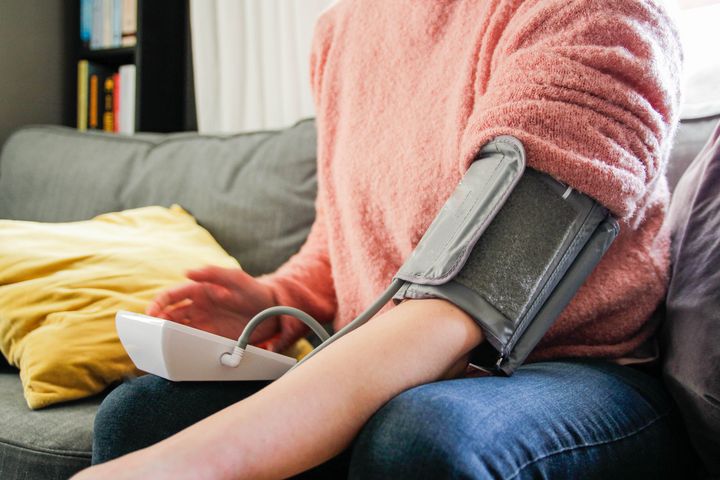Strokes are a leading cause of death in the U.S., with nearly 800,000 people experiencing one every year. On average, a stroke occurs every 40 seconds in the country.
These numbers are jarring and scary, especially for folks who have a family history of stroke or who have risk factors like high blood pressure and certain heart conditions.
But you can arm yourself with knowledge to recognize the symptoms of a stroke, understand the risk factors and ultimately help protect yourself from experiencing one altogether.
According to Dr. Brandon Giglio, the director of vascular neurology at NYU Langone Hospital—Brooklyn, about 85% of strokes in the United States are ischemic strokes, meaning they’re caused by a lack of blood flow to the brain. About 15% are hemorrhagic strokes, which occur when a blood vessel ruptures in the brain.
And among the people who have strokes, many also experience what is known as a warning stroke in the days, weeks or months beforehand.
Here’s what to know about warning strokes:
Warning strokes are known medically as transient ischemic attacks.
Unbeknownst to most people outside of the medical field, warning strokes are a fleeting yet very dangerous medical condition that can be precursors to full-blown strokes.
In fact, up to 1 in 5 people who experience a warning stroke could have a stroke within 90 days if they don’t get medical attention, according to Dr. Ahmed Itrat, the stroke medical director at Cleveland Clinic Akron General.
So what exactly is a warning stroke? Medically, it’s referred to as a transient ischemic attack and causes “sudden-onset transient symptoms of neurological injury which resolve on their own,” Itrat said. “These symptoms may be similar to what one would consider a stroke, but the only difference is they don’t lead to a permanent neurological injury.”
In other words, transient ischemic attacks come on quickly, last for a short time and do not result in the type of brain damage that can be seen with full-fledged strokes.
But the lack of potential brain damage does not mean you should ignore a transient ischemic attack. It’s still a medical condition that needs to be taken seriously, Giglio said. “It really is a harbinger in many people for someone who is going to have a stroke even within the next 48 hours and certainly within the next seven, 30, 90 days,” he said.
Transient ischemic attacks are also commonly referred to as “ministrokes.” But Dr. Joshua Willey, a stroke neurology expert at Columbia University’s Vagelos College of Physicians and Surgeons, said this problematic term minimizes the emergent nature of the condition. The phrase “warning strokes,” on the other hand, highlights that this condition is an emergency, just like a “regular” stroke, he said.
The signs of transient ischemic attacks and strokes are the same.
“I would say that basically all the same signs and symptoms of a stroke are the signs and symptoms of a transient ischemic attack,” Giglio said.
All three experts who spoke with HuffPost referred to “BE FAST” as a widely accepted mnemonic device detailing the signs of stroke. And as the acronym suggests, these symptoms come on quickly, Giglio said.
- Balance — changes in balance or a loss of balance.
- Eyesight — changes in vision, like blurriness, loss of sight or double vision.
- Facial droop — drooping of the face or an uneven smile.
- Arm — arm weakness on one side of the body.
- Speech — changes in speech, like slurring words or speaking gibberish.
- Time — it’s time to call emergency services. According to Willey, the “t” can also stand for the terrible headache that comes on fast.
“You could have all of those symptoms, you could have one of those symptoms or any mixture in between,” Giglio said. So, don’t wait around for more than one sign. If you notice any of these issues, go to the emergency room.
Kinga Krzeminska via Getty Images
The symptoms are fleeting.
Many people dismiss the signs of a transient ischemic attack because of how quickly they go away, according to all three experts.
But it’s important to take these symptoms seriously, no matter their brevity. And while there is no hard-and-fast rule for exactly how long they might persist, there are general guidelines.
“Typically, we’ve come to recognize that transient ischemic attacks probably last, at most, 5 minutes [or] 10 minutes and certainly less than an hour,” Willey said. He added that warning strokes could last for just 30 to 60 seconds.
That means you should not minimize a minute of arm soreness or blurred vision.
“Even though, by definition, transient ischemic attacks are transient, when a person’s having symptoms there’s no way to predict whether that’s going to be resolving down the road or the symptoms are going to persist and lead to a disability,” Itrat said.
You should call for help if you experience symptoms.
As soon as you notice any signs, you should call emergency medical services rather than wait for the symptoms to go away — because they may not resolve.
“If someone has any of those signs and they were abrupt in onset, I would advise them to go to the nearest emergency room,” Giglio said.
Willey added that once you’re there, you should escalate your situation and let the medical staff know that you think you may have had a stroke. In other words, don’t beat around the bush or discount your symptoms. A warning stroke is an emergency and should be treated as such. Communicating with nurses and doctors effectively will let them know you need to be treated quickly.
Additionally, Willey said if you don’t feel comfortable going to the emergency room, you should see your doctor or cardiologist as soon as possible. And that doesn’t mean in a week; it means, truly, as soon as possible. It’s important to remember that many people who experience a transient ischemic attack will have a stroke within 48 hours, so waiting any amount of time is not ideal.
You can reduce your risk.
Conditions like high cholesterol and uncontrolled diabetes put you at increased risk for stroke, according to Itrat.
It’s important to talk to your doctor if you have any of these conditions and make sure you are managing them effectively. This could mean making some lifestyle changes, Giglio added.
You may need to increase your physical activity, quit smoking, alter your diet or take medications for things like high blood pressure, according to the Centers for Disease Control and Prevention.
If you do find yourself experiencing any of the relevant symptoms, it’s important not to ignore them.
“There’s an urgent need for the public to understand the signs and symptoms of stroke, and what to do,” Willey said. Unfortunately, he added, many people wait too long to seek treatment for stroke and warning stroke.
Support Free Journalism
Already contributed? Log in to hide these messages.
Strokes are very common in the U.S., so be sure to understand the symptoms and immediately alert a medical professional if you or a loved one suffers from a transient ischemic attack.


